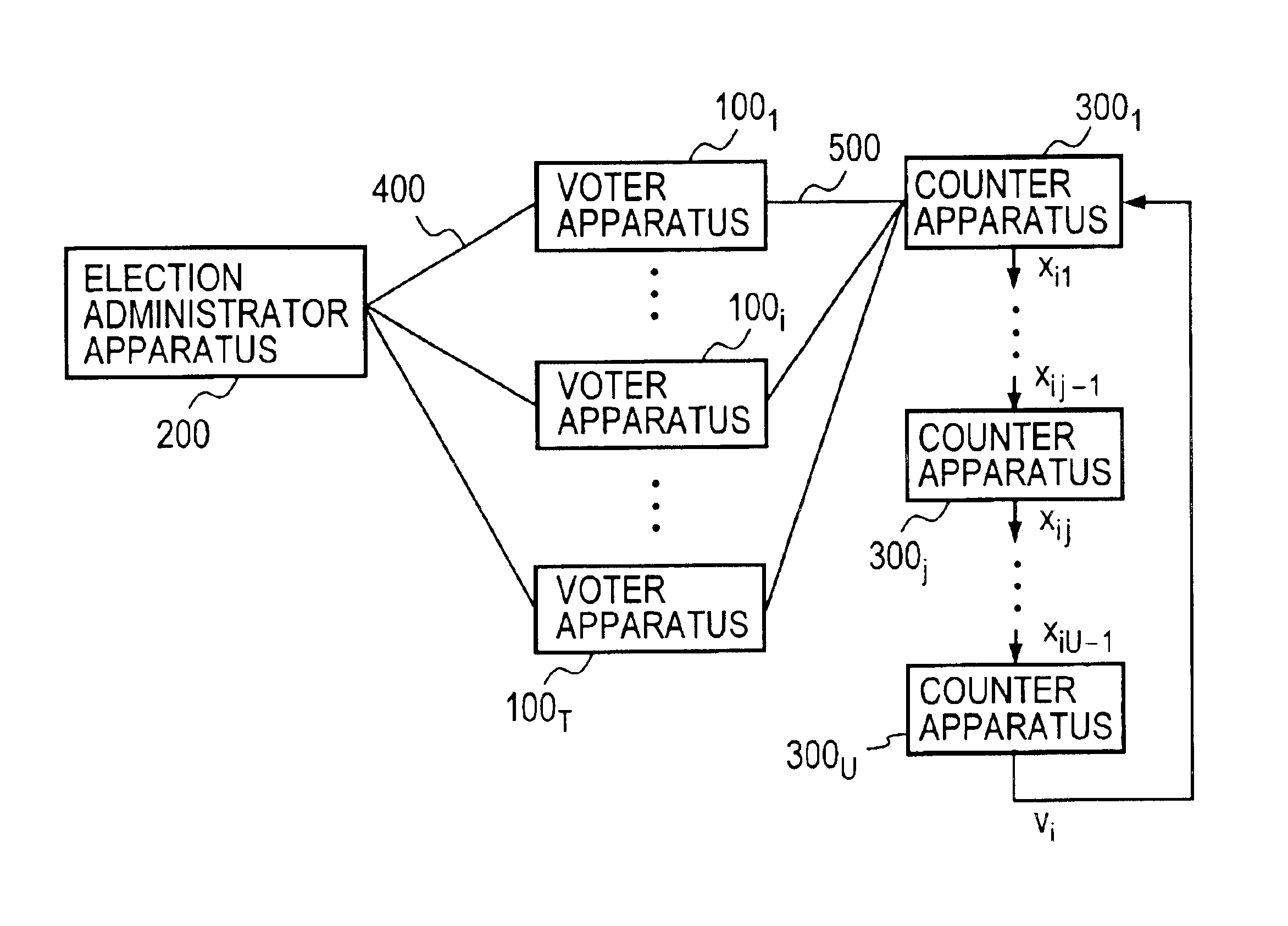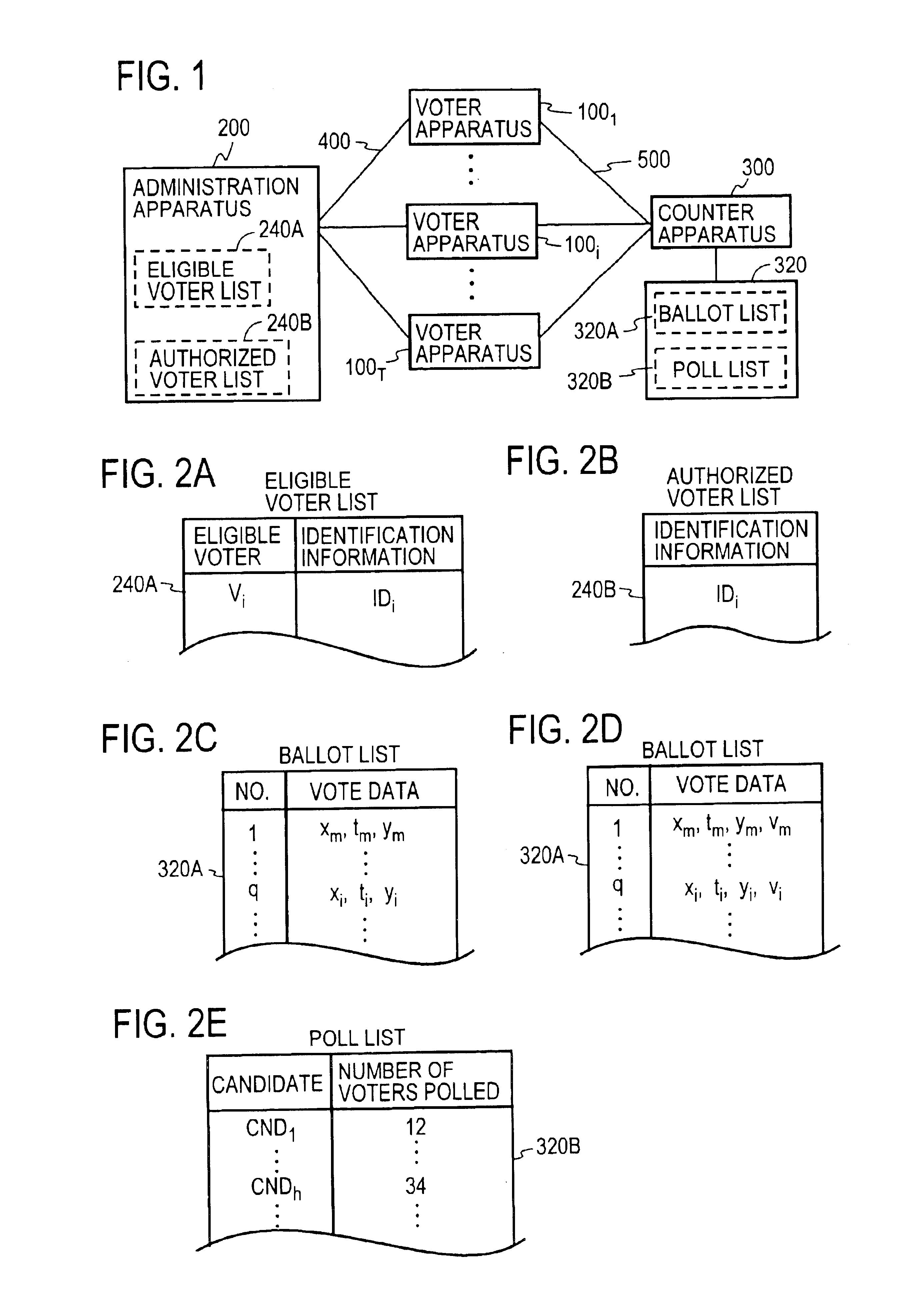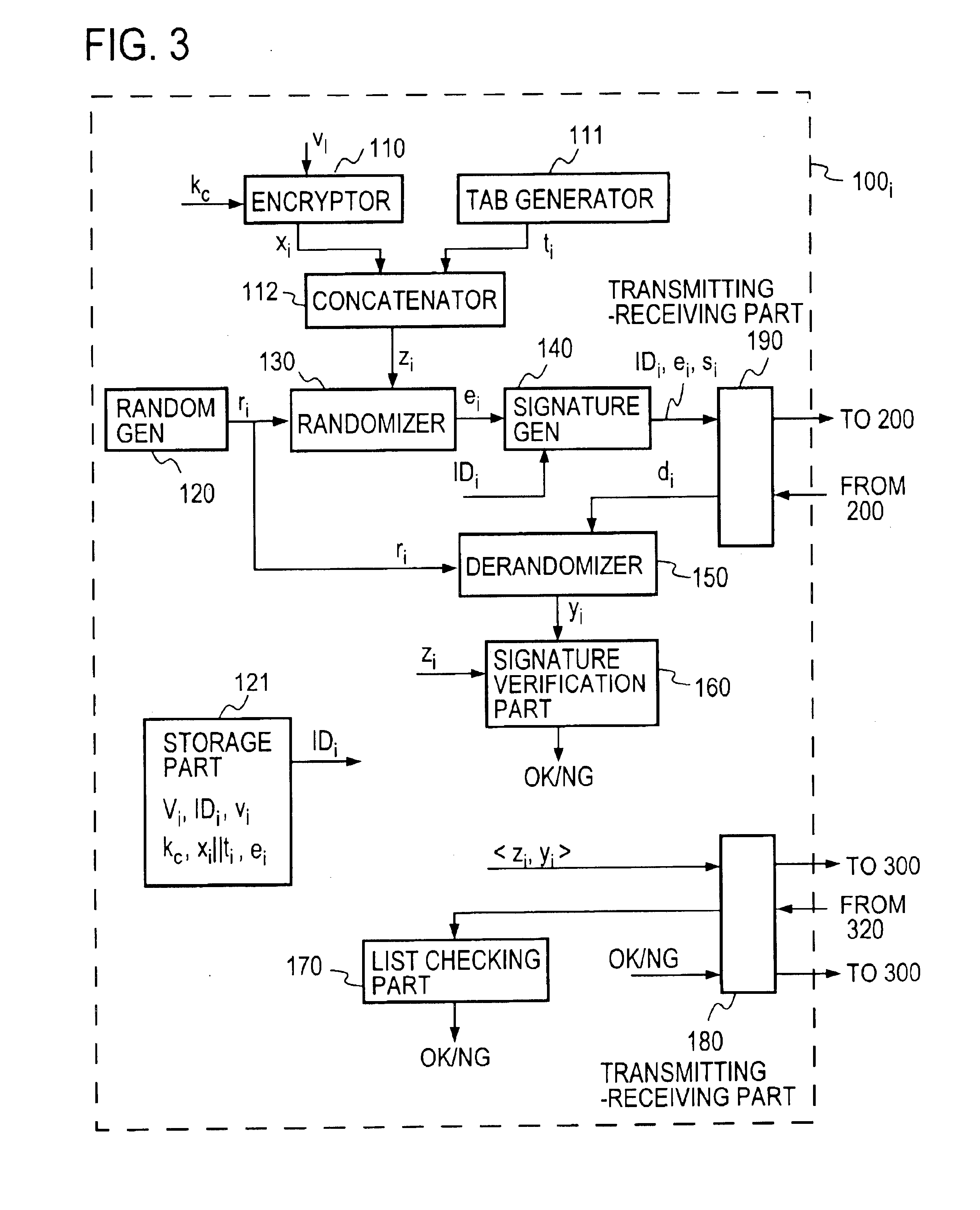Electronic voting method and system and recording medium having recorded thereon a program for implementing the method
a technology of electronic voting and recording medium, applied in the field of electronic voting system, can solve the problems of lack of usability of the conventional system from the voter's point of view, and achieve the effects of ensuring voter privacy, robustness against system dysfunction, and simple and convenien
- Summary
- Abstract
- Description
- Claims
- Application Information
AI Technical Summary
Benefits of technology
Problems solved by technology
Method used
Image
Examples
embodiment 1
FIG. 1 schematically illustrates the general configuration of the voting system according to the present invention. Apparatuses 100 of T voters Vi (where i=1, . . . , T) (which apparatuses 100 will hereinafter be referred to as voter apparatuses) are each connected to an apparatus 200 of an election administrator A (which apparatus 200 will hereinafter be referred to as an administrator apparatus) and a apparatus 300 of a counter C (which apparatus 300 will hereinafter be referred to as a counter apparatus) via nonanonymous and anonymous communication channels 400 and 500, respectively. When sending information to the administrator A via the nonanonymous communication channel 400, the voter Vi adds the information with sender information indicating who the sender is, for example, his name Vi or identification information IDi. In the case of sending information to the counter C via the anonymous communication channel 500, the voter Vi adds no sender information. The counter C publish...
embodiment 2
FIG. 7 schematically illustrates the general configuration of a voting system according to a second embodiment of the present invention. This embodiment is identical with the first embodiment in that every voter apparatus 100 is connected to the administrator apparatus 200 through the communication channel 400 and to one counter apparatus through the anonymous communication channel 500, but structurally differs in that a plurality of counter apparatuses (hereinafter referred to as distributed counter apparatuses) 300j (where j=1, . . . , U). The distributed counter apparatus 3001 decrypts ciphertexts xi from all voters to generate xi1 and sends it to the next distributed counter 3002; similarly, a j-th distributed counter apparatus 300j decrypts decrypted data xij-1 received from the immediately preceding distributed counter apparatus 300j-1 to generate decrypted data xij and sends it to the next distributed counter apparatus 300j+1. The vote content vi is obtained for the first tim...
third embodiment
FIG. 9 illustrates the general configuration of a voting system according to a third embodiment of the present invention. In this embodiment each voter apparatus 100i (where i=1, . . . , T) is made connectable to all the distributed counter apparatuses 3001 to 300U through the communication channels 500, and sends its generated vote data <zi, yi> to all of the distributed counter apparatuses 3001 to 300U. The configurations of each voter apparatus 100i and the administrator apparatus 200 are the same as in the first and second embodiments.
The first to (U−1)th distributed counter apparatuses 3001 to 300U-1 all identical in configuration. FIG. 10A depicts the configuration of the j-th distributed counter apparatus 300j, which comprises: a signature verification part 310 for verifying the validity of the signature yi for the ballot zi in the vote data <zi, yi> received from each voter apparatus 300i; a separation part 350 for separating the ciphertext xi from the ballot zi; a...
PUM
 Login to View More
Login to View More Abstract
Description
Claims
Application Information
 Login to View More
Login to View More - R&D
- Intellectual Property
- Life Sciences
- Materials
- Tech Scout
- Unparalleled Data Quality
- Higher Quality Content
- 60% Fewer Hallucinations
Browse by: Latest US Patents, China's latest patents, Technical Efficacy Thesaurus, Application Domain, Technology Topic, Popular Technical Reports.
© 2025 PatSnap. All rights reserved.Legal|Privacy policy|Modern Slavery Act Transparency Statement|Sitemap|About US| Contact US: help@patsnap.com



